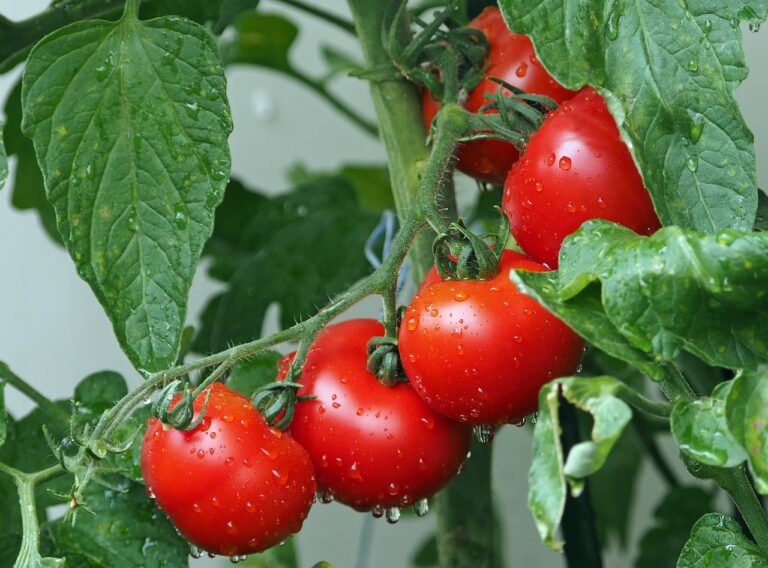Comprehensive Guide to Choosing and Applying Fertilizers for Your Plants
Choosing the perfect fertilizers is crucial for my plants’ well-being. Organic fertilizers, like compost, offer nutrients naturally. Commercial fertilizers provide synthetic nutrients efficiently. Remember, plants need nitrogen for leaves, phosphorus for roots, and potassium for immunity. Analyze N-P-K ratios to meet specific plant needs. Timing matters; spring and summer are prime for fertilizing. Water soil before applying to avoid root damage. Regularly test soil to spot nutrient deficiencies early. Treating imbalances promptly supports plant growth. Understanding your fertilizers improves plant health. Investigate further to master fertilizing techniques for thriving plants.
Types of Fertilizers for Plants
When selecting fertilizers for your plants, it is essential to comprehend the various types available to determine the most suitable option for your gardening needs. Two main categories of fertilizers exist: organic and commercial. Organic fertilizers are derived from once-living plants or animals, making them environmentally friendly. They provide essential nutrients like nitrogen, phosphorus, and potassium but usually have lower NPK values compared to commercial products. Commercial fertilizers, on the other hand, are made from synthetic or mined materials. They come in various formulas like 16-16-16 or 5-10-10, indicating the percentages of nitrogen, phosphorus, and potassium they contain.
For those looking to promote root growth and overall plant health, phosphorus is a key nutrient to take into account. This mineral plays an important role in energy transfer within the plant, aiding in processes like photosynthesis and root development. When deciding between liquid fertilizers and compost, think about the immediacy of nutrient delivery. Liquid fertilizers act quickly and are ideal for cold soil conditions or providing midseason boosts to your plants. Compost, which acts as both a soil conditioner and nutrient supplier, can be used as a side dressing for plants or mixed into the soil before planting to improve overall soil health. Understanding the differences between these fertilizer types will help you make informed decisions to support your plants effectively.
Essential Nutrients for Plant Health
To ensure plant health and growth, understanding the importance of essential nutrients like nitrogen, phosphorus, and potassium is essential. These macronutrients are necessary for overall plant development. Nitrogen is responsible for promoting lush, leafy growth, phosphorus aids in root development, and potassium boosts plant immunity, making them essential components of any plant nutrient regimen. In addition to macronutrients, micronutrients such as iron, zinc, and magnesium are equally crucial for plant health. Iron is critical for chlorophyll production, zinc influences growth hormones, and boron supports cell division.
Understanding the specific nutrient needs of plants is key to preventing nutrient deficiencies that can impede growth and overall health. When plants lack essential nutrients, they show symptoms like yellowing leaves, stunted growth, and poor fruit development. Incorporating organic matter into the soil can help enhance soil health and nutrient availability for plants. While synthetic fertilizers provide a quick nutrient boost, they may not address the long-term soil health and sustainability of plant growth.
Understanding Fertilizer Formulations
Understanding fertilizer formulations involves analyzing the N-P-K ratio to determine the nutrient composition that best suits your plants’ needs. The N-P-K ratio, representing nitrogen, phosphorus, and potassium percentages, is vital for matching plant nutrient requirements to the fertilizer’s composition. Different fertilizers offer varying ratios to address specific plant needs, ensuring the proper selection of fertilizer formulations to promote excellent plant growth and health. It is imperative to ponder the balance of nutrients provided by the fertilizer to support the overall well-being of your plants.
Key Points to Ponder:
- Nitrogen (N): Essential for leafy green growth and overall plant vigor.
- Phosphorus (P): Essential for root development, flowering, and fruiting.
- Potassium (K): Aids in disease resistance, stress tolerance, and overall plant health.
Best Practices for Fertilizer Application
Considering the timing and method of application is vital for achieving best results when fertilizing your plants. Timing plays a significant role, with the active growth periods in spring and summer being ideal for fertilization. Before applying fertilizer, it’s beneficial to water the soil to prevent root burn and improve nutrient absorption. Granular fertilizers are best distributed evenly around the roots to guarantee effective delivery of nutrients to the plants. On the other hand, liquid fertilizers should be diluted and applied around the base of the plant for maximum absorption by the roots.
It’s essential to monitor how your plants respond to fertilization to gauge the effectiveness of the nutrients provided. Adjusting the fertilizer application based on plant health indicators is vital for promoting healthy growth. By observing for signs of nutrient deficiencies and overall plant vitality, you can tailor the fertilization schedule to meet your plants’ specific needs.
Identifying and Treating Nutrient Deficiencies
Identifying nutrient deficiencies in plants is vital for maintaining their health and maximizing growth potential. When plants lack essential nutrients, they can exhibit signs such as stunted growth and leaf discoloration. For example, a calcium deficiency often shows in distorted leaves and weak stems, while a magnesium deficiency appears as yellowing between leaf veins. To address these issues effectively, regular soil testing is important. It helps in identifying nutrient imbalances and preventing deficiencies before they become severe.
- Micronutrient deficiencies like iron, zinc, and boron can greatly impact plant growth and development. These deficiencies may not always be visually apparent, highlighting the importance of soil testing to detect them early and take corrective action.
- Treating nutrient deficiencies involves targeted supplementation tailored to the specific needs of the plant. By understanding the symptoms of common deficiencies and conducting soil tests, gardeners can provide the necessary nutrients to support healthy plant growth.
- Maintaining a balanced nutrient profile in the soil is crucial to ensure that plants have access to all the essential elements they need for ideal growth and development.






